The iPhone 6 Plus Mini-Review: Apple's First Phablet
by Joshua Ho on September 30, 2014 8:00 AM EST- Posted in
- Smartphones
- Apple
- Mobile
- iOS
- iPhone 6 Plus
Display
While the iPhone 6 Plus’ display is largely similar to the iPhone 6’s display, there are still a few areas worth talking about. The first area is resolution, which is noticeably better on the iPhone 6 Plus on close examination. In general, there’s less aliasing that is visible on the display. While text rendering in general is even better, the improved resolution is most obvious in the rotation lock symbol, which is noticeably smoother and rounder. The use of the 2208x1242 resolution with downscaling should also have a similar effect to FSAA (Full Screen Anti-Aliasing), which will reduce the effects of aliasing on the display.
Outside of simple resolution testing, we also need to test all other aspects of the display. In order to do this, we turn to SpectraCal’s CalMAN 5 with a custom workflow. As always, we use a spectrophotometer to measure color to ensure accurate results. For this review, I won’t go over viewing angles as that’s covered in the iPhone 6 review.
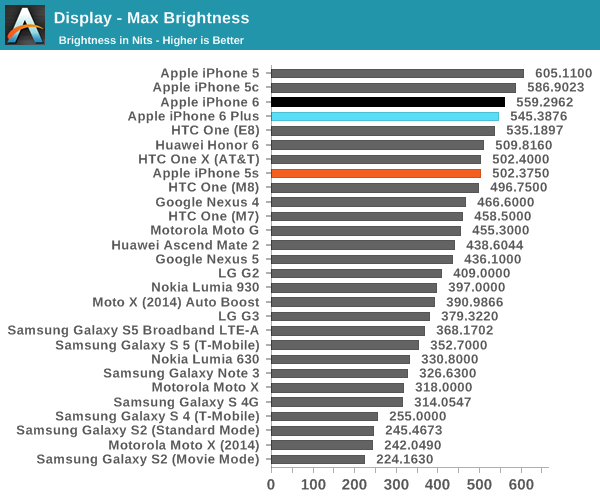
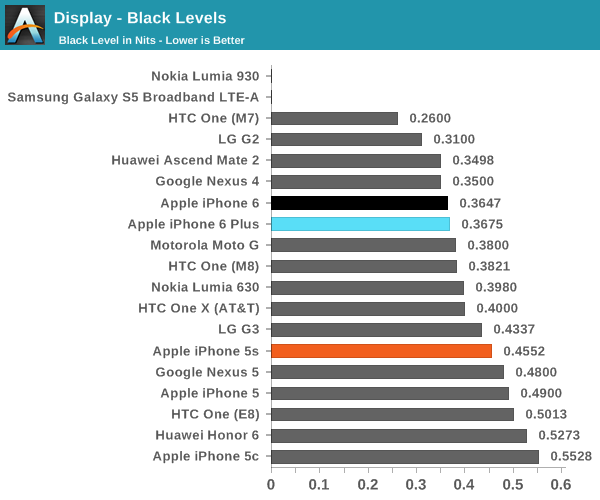
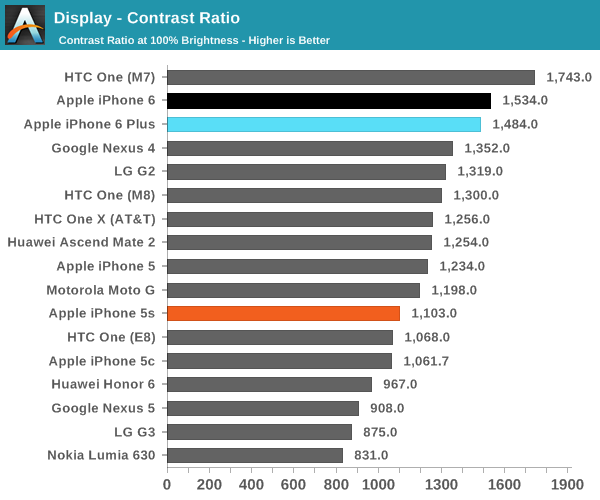
Our first test is of peak luminance and contrast. At maximum, the contrast difference between the iPhone 6 and 6 Plus is relatively small, and the difference in peak luminance is relatively small as well. I suspect that this means that Apple isn’t quite at the point where backlight luminous efficiency is rapidly falling off the way it seems to at 500+ PPI RGB LCD displays.

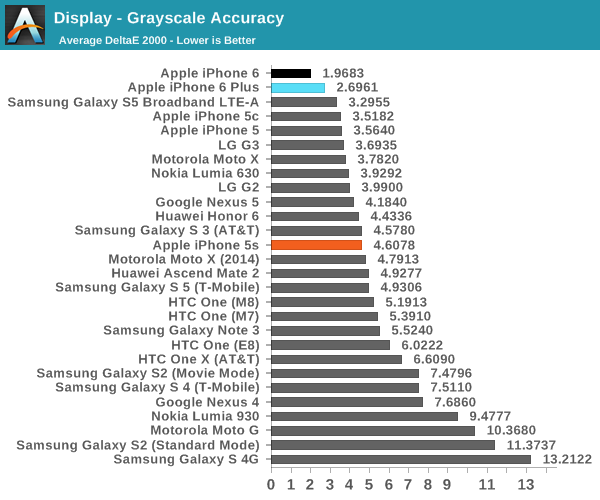
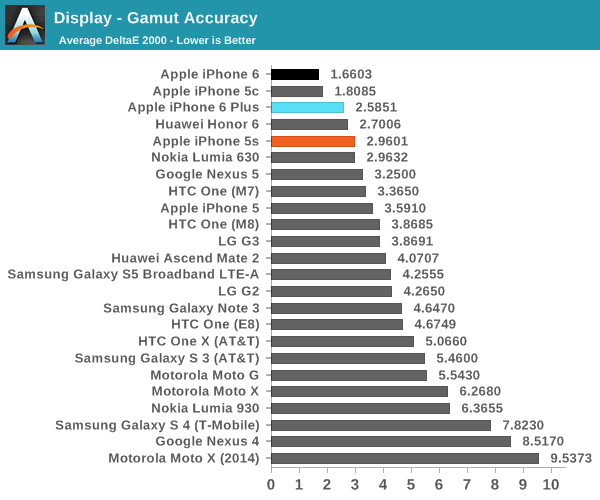
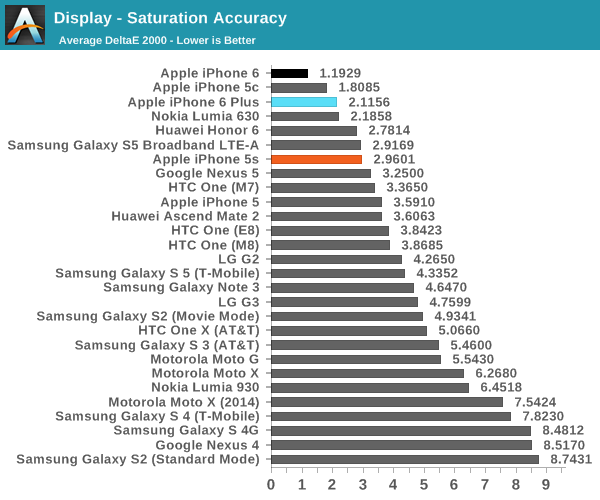
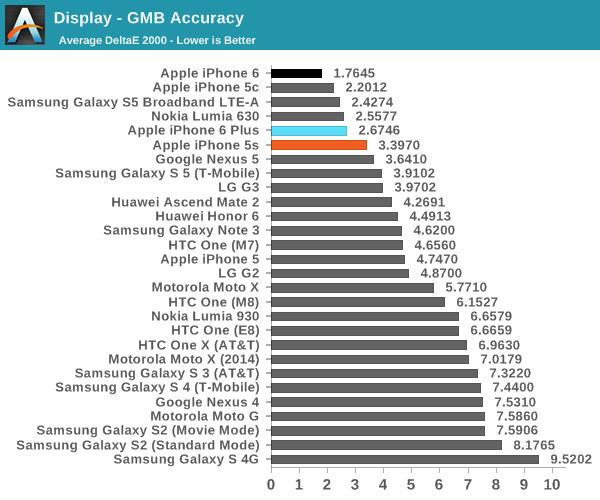
While I normally walk through each type of calibration test, there’s relatively little need in this case as the iPhone 6 Plus is close to the iPhone 6. There are some differences and the iPhone 6 is nearly perfect while the 6 Plus ends up being better than the 5s but not quite at the same level as the 6. I suspect this could be due to production variance, but these are different panels so without additional test units we can't say for certain. The iPhone 6 Plus display is quite close to the iPhone 6’s display in most regards, only larger; this is effectively as good as it gets for an LCD display.
Camera
Ultimately the change to the camera is the one difference that really sets the iPhone 6 and 6 Plus apart outside of the change in size. This one difference is optical image stabilization, or OIS. However, at first it's almost impossible to tell whether OIS is active. As someone who has used multiple cameras with OIS, this is a very odd sensation. Normally, OIS means that it's possible to see the effect of reverse accommodation in either the camera preview or while recording video, but I never saw these effects while recording video, whether in daytime or at night. In fact, I'm not even sure that video is ever optically stabilized, as seen in the videos below. I'm not sure why Apple chose to do this, as video recording is already cropped and would hide most of the odd effects that occur at the edges of the field of view when using OIS.
Putting aside OIS in video, it's obvious that the one area where OIS would be put to use is low light photography. Examining the EXIF data of low light photos, I was rather surprised to discover that in single shot mode (burst mode caps shutter speed to 1/15s) that the iPhone 6 Plus never exceeds 500 ISO. However, in order to keep pace with the iPhone 6's maximum of 2000 ISO and 1/15s exposure time, the iPhone 6 Plus drives exposure time as far as a quarter of a second, which is four times as long.
I really can't emphasize how incredible it is that Apple has pulled this off as it felt like something was wrong when I was testing low light photos as seen below. Normally, such a long exposure time entails noticeable trade-offs, but as far as I can tell motion blur is close to what I see on the iPhone 6 in low light. This seems to be the product of the multiple exposure combination that was mentioned in the keynote, and it really does work as advertised. While some benefit can be seen in the lightbox shot above, it's really in low light conditions like the photo below where we see significant benefits.
As you might expect, there's not much difference in daytime photos. I'm guessing that OIS is disabled above a certain shutter speed in order to reduce the distortion and blurriness that can come from OIS.


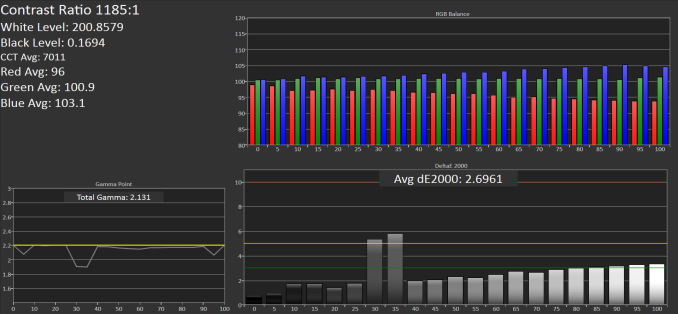
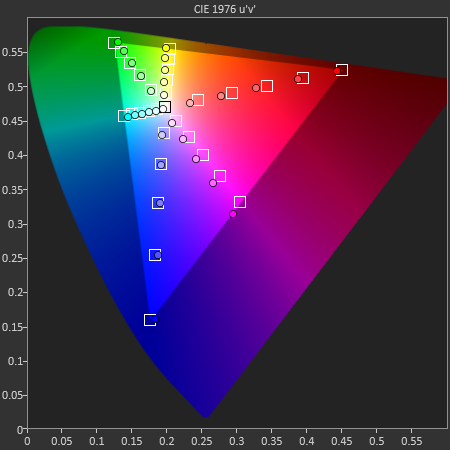
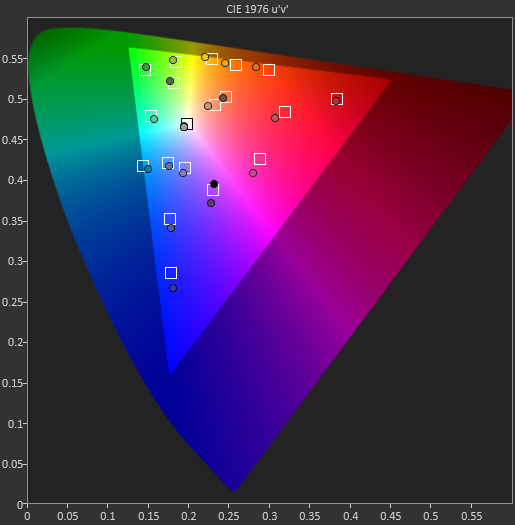






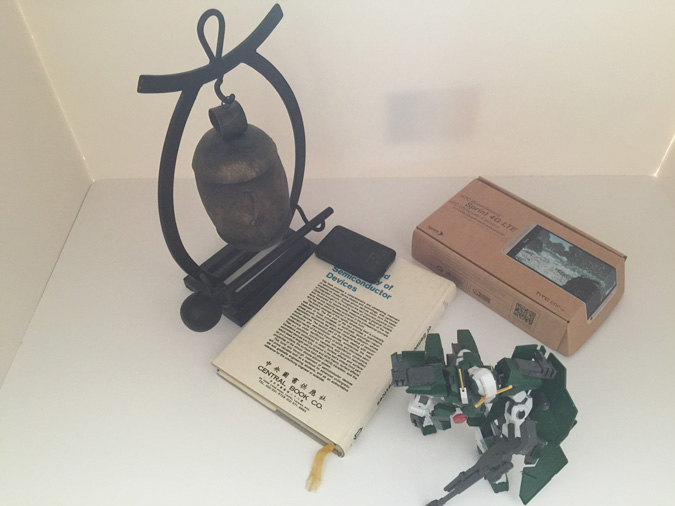






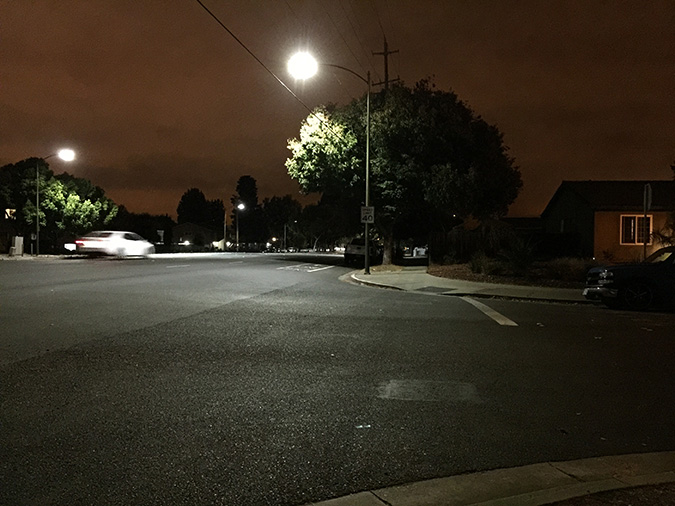






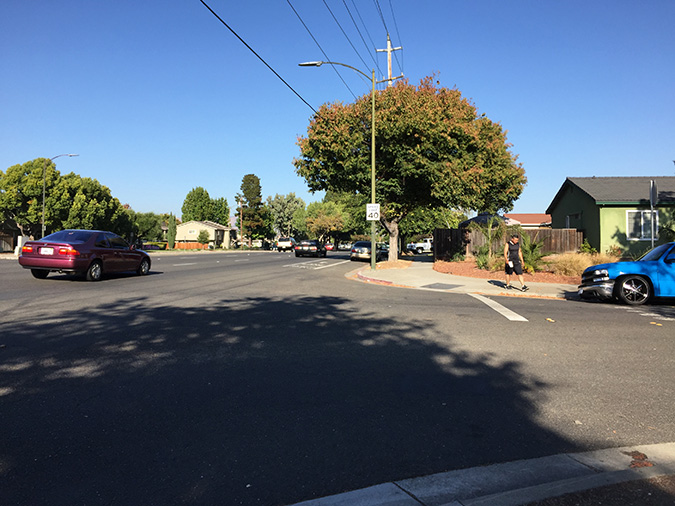








191 Comments
View All Comments
trynberg - Tuesday, September 30, 2014 - link
"They always make sure they come up with the first of its kind"????Hello, mainstream Android has had screens larger than 4" and phablets for 3 years. Many of the features in iOS 7 and iOS 8 were directly cribbed from Android. Apple has a nicely curated experience but give me a break.
trynberg - Tuesday, September 30, 2014 - link
No mention of any of the software bugs? No mention of apps not working properly with the new screen. A blanket assertion at the end of the review that says this is the best phablet with zero justification as to why this is better than a Note or G3?I would think Anandtech would work extra hard to make sure they are neutral towards Apple when your owner and another long term writer both left to work for Apple. This review doesn't come across as neutral.
There are legitimate criticisms of any phone, Android, WP, or Apple, and I didn't see any listed here.
cwolf78 - Tuesday, September 30, 2014 - link
Exactly. I've been slowly questioning the credibility of this site more and more. There was an obvious Apple bias when Anand and Brian were still here. I was hoping that would stop when they left. But I see more of the same. I'm not disputing that the iPhone 6 Plus is a great phone in its own right, but to say it's the best "phablet" on the market when it doesn't even have any demonstrable phablet capabilities? There's a lot more to a phablet than having a bigger screen. How about a stylus? Multi-window or split-screen support? Actual real multitasking? How about taking notes or sketching? How in the hell is this the best phablet on the market? You can't just claim something like that without backing it up and expect to be taken seriously.joe_dude - Wednesday, October 1, 2014 - link
There has been a slight pro-Apple bias ever since Anand started using Macs years ago. But it was never really an issue, since the testing was unbiased. Just ignore the pro-Apple conclusions, and it was all good. Glossing over problems is not what Anandtech is (or was) about.nerd1 - Wednesday, October 1, 2014 - link
Anand ALWAYS showed secret apple bias for years, by selecting which results to show etc (He always showed results that are favorable to apple devices). Take a look at the surface 3 pro review. He compares its IPS screen to macbook air's TN screen with TERRIBLE viewing angle and says SP3 has worse color accuracy than MBA.And now it just became more obvious so that anyone can notice. It's sad.
hlovatt - Wednesday, October 1, 2014 - link
You say the Anand review was biased against SP3 yet in the conclusions he says:"I was a fan of the original Surface Pro, and with Surface Pro 3 I think Microsoft has taken the hardware much closer to perfection."
Sounds like he likes it a lot to me. I take it that to you any criticism of the SP3, no matter how minor, is a sign of bias.
If you really want to see bias, I suggest you look no further than the nearest mirror.
nerd1 - Thursday, October 2, 2014 - link
SP3 is the best windows tablet devices ever, and he does not deny that. Yet it is just totally and absolutely absurd to compare SP3's 1440p IPS display to MBA's 900p TN display with terrible, terrible viewing angle. And he did, only showing test results favorable to MBA (like color accuracy when viewed DIRECTLY front of the screen)hlovatt - Thursday, October 2, 2014 - link
I think you see bias everywhere you look.He compared it to a number of devices: MBA, rMBP, and Air. The display of the SP3 came in better than MBA, but worse than the others, and that is what he said:
"Overall the Surface Pro 3 display is a huge improvement over the previous two generations, but it doesn't quite meet the high standards set by some of the other competitors on the market today from both notebook and tablet spaces."
I don't see bias in this, he just chose a number of broadly similar devices that lay from the cheaper MBA and Air to the slightly more rMBP, that seems fair and balanced to me.
GigaMonster - Thursday, October 2, 2014 - link
If you want to use a stylus with your iOS device, use a stylus. They're supported. WACOM makes a very nice 2048 one and plenty of apps make use of its multiple levels of sensitivity.instantchip - Tuesday, September 30, 2014 - link
In case you're conflicted about whether to get iPhone 6 or 6 Plus (like I was), try this quick decision tree to make your pick easier. It's on chipbrown(dot)me.It helped me decide--hope it helps you!